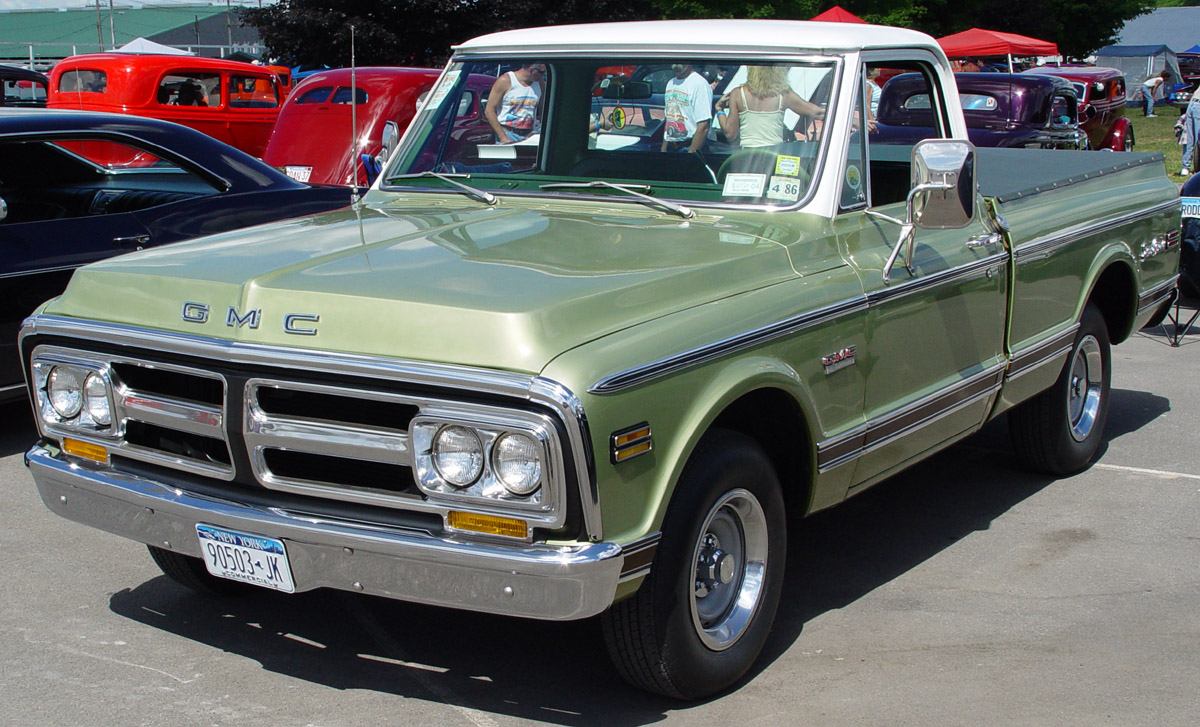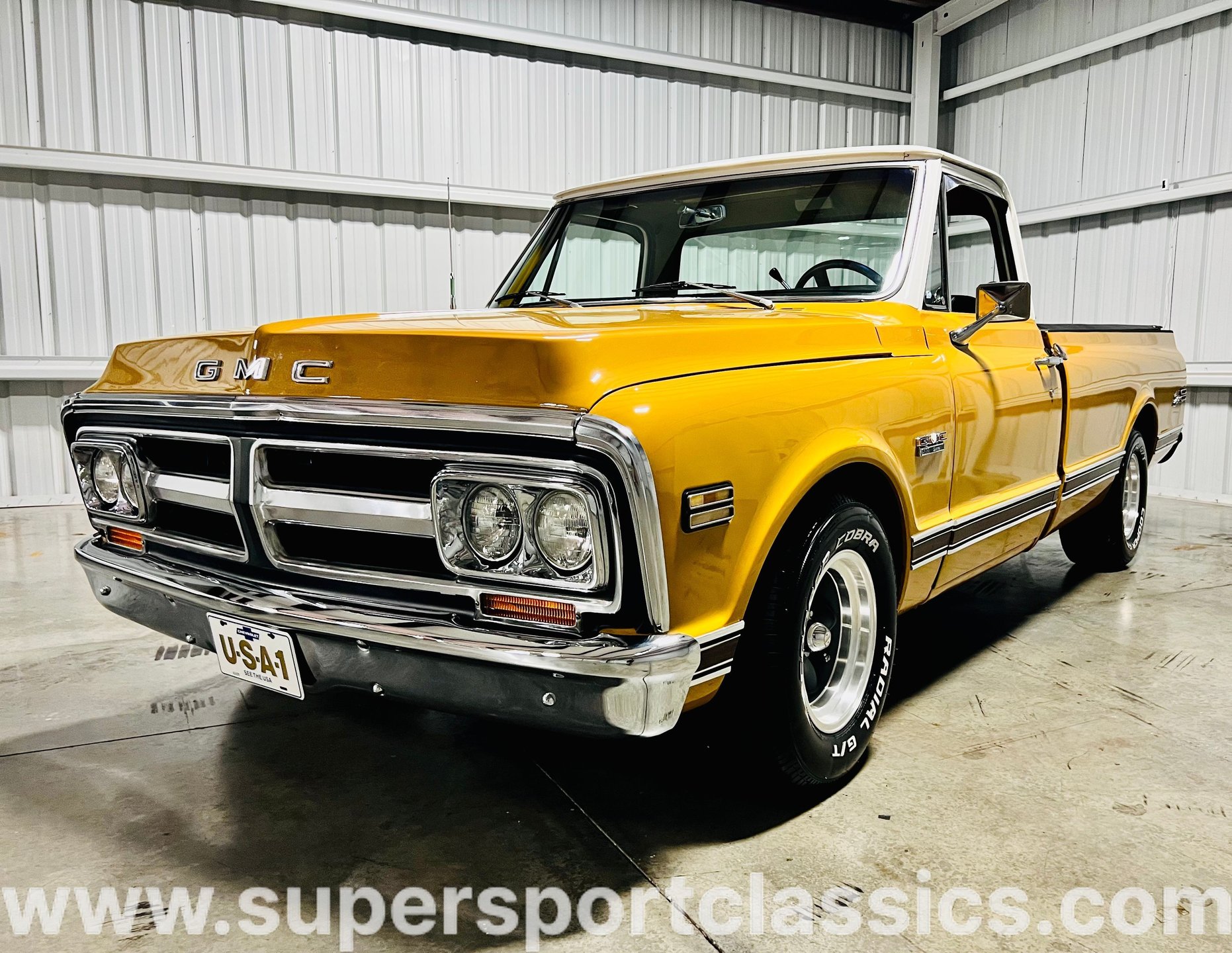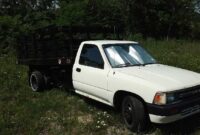1972 GMC Pickup Trucks For Sale: Your Comprehensive Buyer’s Guide pickup.truckstrend.com
The year 1972 holds a special place in the hearts of classic truck enthusiasts, particularly when it comes to the GMC pickup. Representing the final year of the beloved "Action Line" C/K series, the 1972 GMC truck blends timeless aesthetics with rugged utility, making it a highly sought-after vintage vehicle. Whether you’re a seasoned collector, a first-time classic buyer, or someone simply yearning for a piece of American automotive history, understanding what goes into finding and purchasing a 1972 GMC pickup for sale is crucial. This guide will walk you through everything you need to know, from its enduring appeal to the practicalities of acquisition.
Why a 1972 GMC Pickup? The End of an Era
1972 GMC Pickup Trucks For Sale: Your Comprehensive Buyer’s Guide
The 1967-1972 C/K series, affectionately known as the "Action Line," is arguably one of the most iconic and popular truck generations ever produced by General Motors. The 1972 model year, being the culmination of this design, incorporated all the refinements and improvements made over the preceding years. Its clean lines, wide stance, and comfortable ride (for its era) set it apart. Unlike its Chevrolet C10 counterpart, the GMC offered a distinct grille design and often unique trim levels, appealing to buyers looking for something slightly different.
The appeal of the ’72 GMC lies not just in its classic looks but also in its robust construction and relative simplicity. These trucks were built to work, and many have survived decades of use, proving their durability. For many, owning a 1972 GMC is a journey back to a simpler time, a tangible connection to automotive heritage, and a vehicle that stands out in a sea of modern, homogenized designs. Its growing collector status also means that a well-maintained or restored example can be a solid investment.
Key Features and Specifications of the 1972 GMC
To make an informed purchase, it’s essential to understand the standard features and available options of a 1972 GMC pickup:
- Engine Options: GMC offered a range of robust engines. Common options included the reliable Inline-6 (250 cu in or 292 cu in) known for its torque and longevity, and various small-block V8s (307 cu in, 350 cu in). The potent 402 cu in (often referred to as a 400 big-block) was also available, offering significant power.
- Transmissions: Buyers could choose between manual transmissions (3-speed on the column, 4-speed on the floor) or automatic transmissions (Turbo-Hydramatic 350 or 400).
- Body Styles: The 1972 GMC was available in several configurations:

- Short Bed (Fleetside & Stepside): Typically 6.5 feet, popular for their sporty appearance and maneuverability.
- Long Bed (Fleetside & Stepside): Typically 8 feet, favored for utility and hauling capacity.
- 2WD (C-series) and 4WD (K-series): The C-series trucks are more common, while K-series (4×4) are highly desirable for off-road enthusiasts or those in rugged terrains.
- Trim Levels: GMC offered several trim levels, each with varying degrees of chrome, interior appointments, and standard features:
- Custom: The base model.
- Super Custom: Offered more amenities than the Custom.
- Sierra: A step up, often with additional chrome and comfort features.
- Sierra Grande: The top-tier trim, boasting the most luxurious interiors, exterior trim, and often power options.

What to Look For When Buying a 1972 GMC Pickup
Purchasing a classic truck requires a keen eye and patience. Here are critical areas to inspect:
- Rust: This is the primary enemy of vintage vehicles. Common rust spots on 1972 GMCs include:
- Rocker panels and cab corners
- Fender wells and lower fenders
- Door bottoms
- Bed floor and bed sides (especially under bed liner if present)
- Frame rails (check for significant pitting or repairs)
- Underneath the battery tray
- Floor pans
- Frame Integrity: Beyond surface rust, check the frame for any signs of bending, cracks, or improper repairs from past accidents.
- Engine Condition: Look for oil leaks, listen for unusual noises (knocks, ticks), and check for excessive smoke from the exhaust. A test drive will reveal how it performs under load.
- Transmission: Ensure smooth shifting, both up and down. Manual transmissions should not grind, and automatics should not slip.
- Brakes: Check for spongy pedals, pulling to one side, or excessive noise. Many ’72s still have drum brakes; disc brake conversions are a popular upgrade.
- Steering and Suspension: Check for excessive play in the steering wheel. Listen for clunks or squeaks from the suspension.
- Electrical System: Test all lights, gauges, wipers, and the heater/AC (if equipped). Wiring issues can be complex and costly.
- Interior Condition: Assess the seat upholstery, dash pad (prone to cracking), door panels, and headliner. Original parts can be hard to find, but reproductions are available.
- Documentation: Always ask for the title and review any service records, restoration receipts, or ownership history. This can provide valuable insight into the truck’s past.
Restoration Levels and Their Impact on Price
The price of a 1972 GMC pickup varies dramatically based on its condition and level of restoration. Understanding these categories is key to setting realistic expectations:
- Project Truck (Low Cost): These trucks often require extensive work, including rust repair, mechanical overhauls, and full paint/interior. They are the most affordable but demand significant time, money, and skill.
- Driver Quality (Mid-Range): These trucks run and drive reliably, are generally rust-free (or have minor, manageable rust), and are presentable enough for casual cruising. They may have some cosmetic flaws or minor mechanical needs but are functional.
- Nicely Restored/Survivor (Upper Mid-Range): These vehicles have either undergone a quality restoration or are well-preserved original examples (survivors). They are in very good condition, show well, and need minimal work.
- Show Quality/Frame-Off Restoration (High Cost): These trucks are immaculate, often having undergone a meticulous "frame-off" restoration where every component was renewed or replaced. They are suitable for car shows and command the highest prices.
Where to Find 1972 GMC Pickups For Sale
- Online Marketplaces: Websites like ClassicCars.com, Hemmings, Bring a Trailer, eBay Motors, and Facebook Marketplace are excellent starting points. Filter by make, model, and year.
- Classic Car Dealerships: Many specialized dealerships focus on vintage trucks and cars. While prices might be higher, these vehicles are often pre-inspected and sometimes come with a limited warranty.
- Auctions: Live and online auctions (e.g., Mecum, Barrett-Jackson, local estate auctions) can be good places to find trucks, but research is paramount as sales are typically "as-is."
- Local Classifieds & Word-of-Mouth: Don’t underestimate local newspapers, community bulletin boards, or simply asking around at car shows and local garages.
- Forums and Clubs: Joining GMC truck forums or classic vehicle clubs can connect you with owners looking to sell or provide leads on available trucks.
The Buying Process: Tips for a Smooth Transaction
- Research Thoroughly: Understand the different models, common issues, and market values before you even look at a truck.
- Set a Budget: Factor in not just the purchase price but also potential restoration costs, insurance, registration, and ongoing maintenance.
- Inspect in Person: Whenever possible, physically inspect the truck. Bring a magnet to detect body filler over rust.
- Get a Pre-Purchase Inspection (PPI): If you’re serious about a truck, especially one from a distance, hire a reputable classic car mechanic or inspector to perform a PPI. This objective assessment can save you from costly surprises.
- Test Drive: Always test drive the truck under various conditions – city, highway, starting from cold.
- Negotiate: Be prepared to negotiate the price. Use any issues found during inspection as leverage.
- Verify Documentation: Ensure the seller has a clear title in their name and that the VIN matches the title and the truck.
Common Modifications and Upgrades
Many 1972 GMC owners choose to modify their trucks for improved performance, safety, or aesthetics:
- Engine Swaps: Upgrading to a more modern LS-series V8 or a more powerful carbureted V8 is common.
- Suspension Upgrades: Lowering kits, air ride suspensions, or more robust off-road setups for 4x4s.
- Brake Conversions: Swapping front drum brakes for power disc brakes is a highly recommended safety upgrade.
- Power Steering/Brakes: Adding or upgrading these systems for easier driving.
- Interior Enhancements: Modernizing the interior with new gauges, stereo systems, or more comfortable seating while retaining a classic look.
Concluding Summary
The 1972 GMC pickup truck stands as a testament to American automotive design and engineering. Its classic lines, robust build, and the nostalgia it evokes make it a highly desirable vehicle in the classic truck market. While finding the perfect example requires diligent research, careful inspection, and a clear understanding of its condition and value, the reward of owning and driving one of these iconic machines is immeasurable. Whether you envision a show-stopping restoration or a reliable weekend cruiser, a 1972 GMC offers a unique blend of style, utility, and a tangible connection to a golden era of American trucking.
1972 GMC Pickup Trucks For Sale: Price Guide
| Condition Category | Price Range (USD) | Key Characteristics |
|---|---|---|
| Project Truck | $3,000 – $10,000 | Significant rust, non-running or poor mechanical condition, missing parts, major bodywork/paint needed, interior completely redone. Requires extensive restoration. |
| Driver Quality | $10,000 – $25,000 | Runs and drives reliably, minimal to no major rust, presentable paint (could be older or driver-quality repaint), functional interior (may have wear/tears), minor mechanical issues might be present. Suitable for regular use with some TLC. |
| Nicely Restored/Survivor | $25,000 – $45,000 | Excellent cosmetic condition (high-quality repaint or well-preserved original paint), clean interior, sound mechanicals. May have some minor, non-critical flaws. Ready for cruises and local shows. |
| Show Quality/Frame-Off | $45,000 – $80,000+ | Flawless, meticulously restored to original or custom specifications. Every component detailed or new. Often a frame-off restoration. Suitable for national car shows. Prices can exceed $100,000 for rare or highly customized examples. |
Note: Prices are estimates and can vary significantly based on location, specific options (e.g., big-block engine, 4×4, rare trim), originality, quality of restoration, and market demand.
Frequently Asked Questions (FAQ) about 1972 GMC Pickup Trucks
Q1: Is a 1972 GMC a good investment?
A1: Generally, yes. Well-maintained or properly restored 1972 GMC trucks have shown consistent appreciation in value over the years, particularly the more desirable configurations like short-bed V8s or 4x4s. Their status as the last of an iconic body style contributes to their appeal as a collector’s item.
Q2: Are parts readily available for 1972 GMC pickups?
A2: Absolutely! Due to the immense popularity of the 1967-1972 GM truck platform, parts availability is excellent. Numerous aftermarket companies specialize in reproduction body panels, interior components, trim, and mechanical parts. Used original parts are also available through salvage yards and online forums.
Q3: What’s the main difference between a 1972 GMC and a 1972 Chevrolet C10?
A3: Mechanically, they are nearly identical as they share the same chassis, engines, and transmissions. The primary differences are cosmetic, mainly the grille design, hood lettering, taillight lenses, and some interior trim details. GMC often marketed itself as a slightly more upscale or "professional grade" alternative to Chevrolet.
Q4: Can I daily drive a 1972 GMC pickup?
A4: Yes, many owners do. While they lack modern safety features and fuel efficiency, a well-maintained or lightly modified 1972 GMC can be a reliable daily driver. Upgrades like power disc brakes, power steering, and a modern ignition system can significantly enhance drivability and safety for regular use.
Q5: What should I budget for maintenance on a 1972 GMC?
A5: This depends heavily on the truck’s initial condition. For a driver-quality truck, expect typical maintenance costs for an older vehicle, plus occasional specialized repairs. If you’re buying a project, budget significantly for parts and labor. Routine oil changes, fluid checks, and addressing minor issues as they arise are key to keeping it reliable. Factor in potential costs for tire replacement, brake jobs, and suspension component wear.



